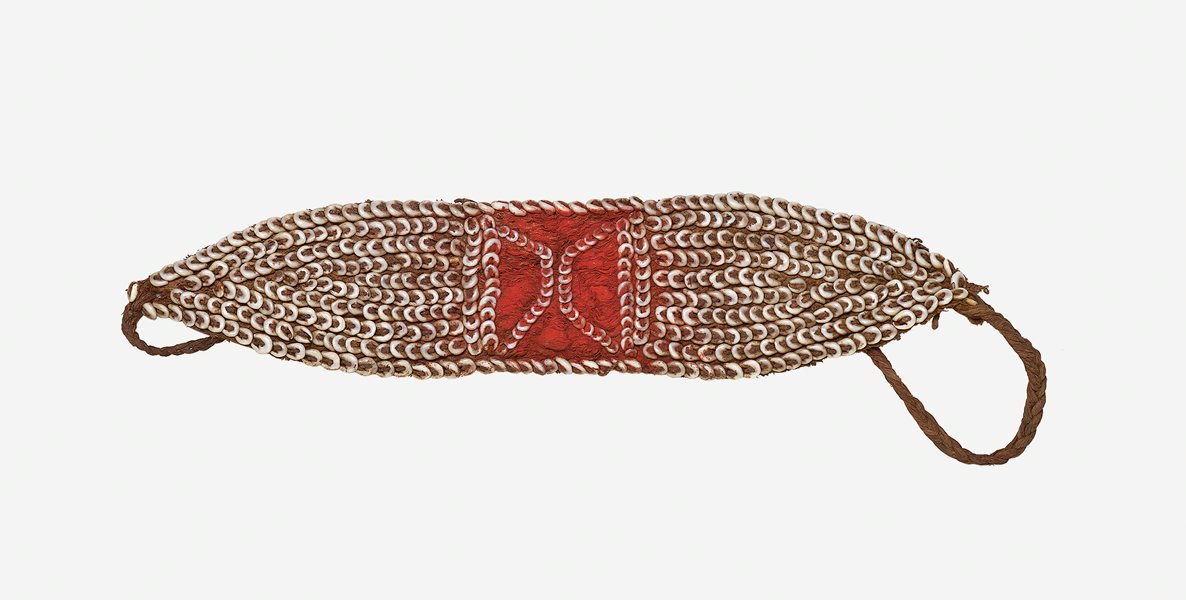-
Details
- Place where the work was made
-
Poroma District
→
Southern Highlands Province
→
Papua New Guinea
- Cultural origin
- Kewa people
- Date
- collected 1969
- Media categories
- Botanical material , Mixed media
- Materials used
- barkcloth, nassa shells (Nassarius), plant fibre string, red pigment
- Dimensions
- decoration 31.0 cm length; overall 79.0 cm length; 6.5 cm width
- Credit
- Gift of Stan Moriarty 1977
- Location
- Not on display
- Accession number
- 626.1979
- Copyright
- © Kewa people, under the endorsement of the Pacific Islands Museums Association's (PIMA) Code of Ethics
- Share
-
-
About
Headbands made by sewing drilled and polished nassa shells onto a band of barkcloth, banana leaf, or other support were found in many highland cultures. In pre-contact times, nassa shells were traded from the north coast along the Jimi River into the Mount Hagen region. For many highlanders, the source of shells was unknown. The Huli and Wola of the southern highlands believed nassa shells were harvested from an enormous tree. The Telefolmin of the western highlands thought they emanated from the corpse of a man.
Before the 1940s nassa shells were rare. Valuable shell headbands – often worn by men in battle – were gifted as part of wealth exchange ceremonies together with ropes of cowrie shells. When the Australian administration began bringing large quantities of nassa shells directly into the highlands, large mats of shells began to circulate and were included as part of bride price payments. Pearlshells and cash eventually superseded nassa shells as important bride wealth items.
[Exhibition text for 'Plumes and pearlshells: art of the New Guinea highlands', AGNSW, 2014]
-
Exhibition history
Shown in 1 exhibition
Plumes and pearlshells: art of the New Guinea highlands, Art Gallery of New South Wales, Sydney, 30 May 2014–10 Aug 2014
-
Bibliography
Referenced in 1 publication
-
Natalie Wilson (Editor), Plumes and pearlshells: art of the New Guinea highlands, Sydney, 2014, 106 (colour illus.), 161. cat.no. 52
-
